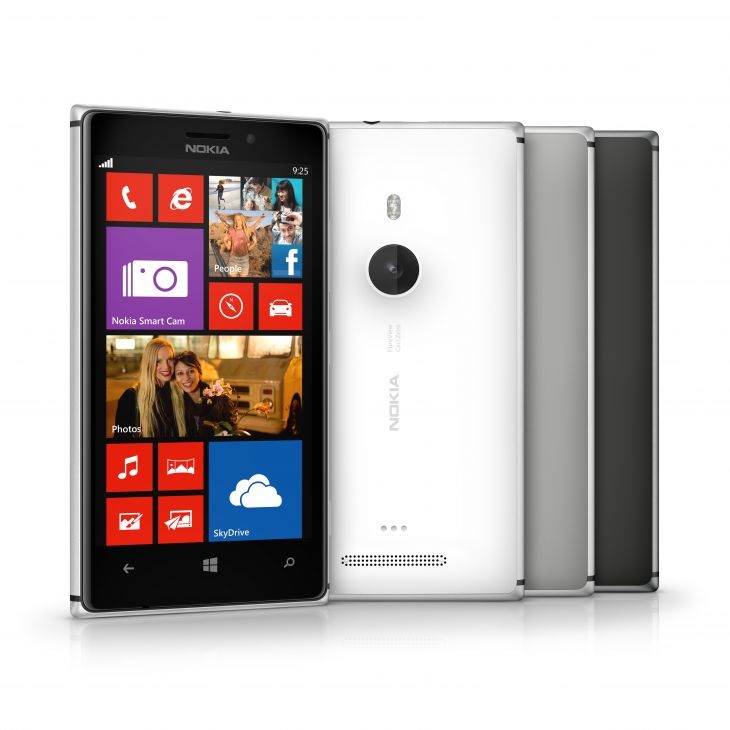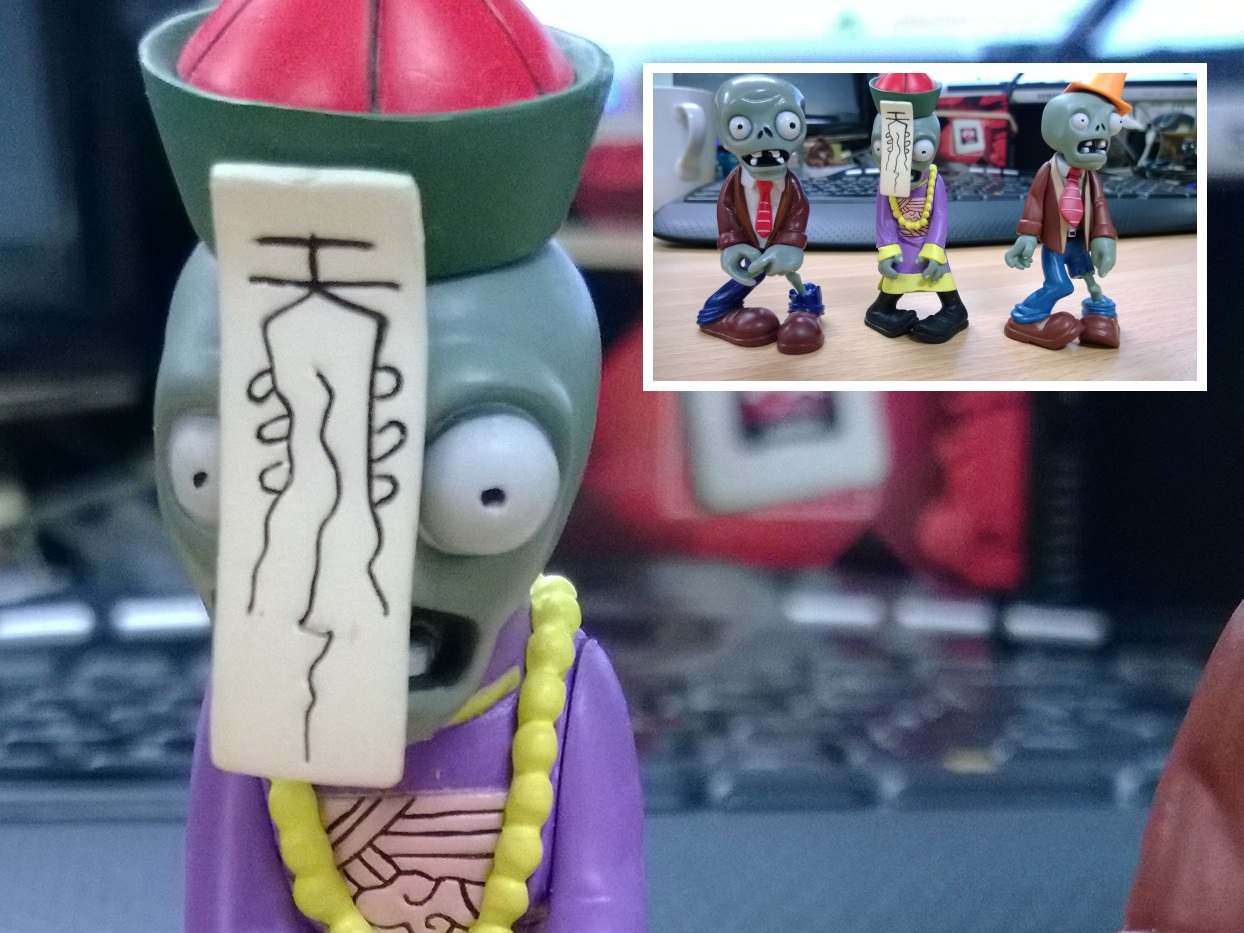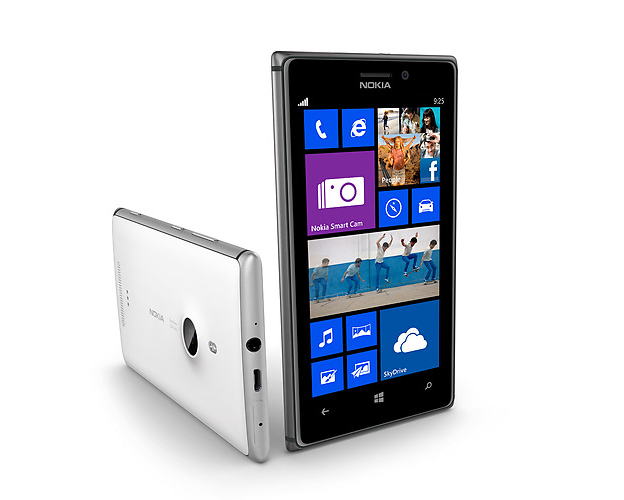Nokia Lumia 925 review
Nokia updates its Lumia range with an AMOLED display and slim-line design– but is it enough to tackle the Galaxy S4?

Nokia has improved its flagship Lumia in most departments, with a better screen and slimmer, lighter design that’s just as affordable as high-end rivals. It’s not the best when it comes to demanding task though, but the real issue comes away from the mains – its battery life is just too poor to recommend.
-
+
Smooth OS performance; Sturdy design; Good screen; Decent value
-
-
Distinctive two-tone design; No interior access; Poor battery life

Nokia has been making slow progress in the smartphone market as its Windows Phone 8 handsets, but this is expected as Android and iOS devices have had a long headstart. The Finnish firm hopes that'll change with its Lumia 925 the latest flagship that marks a big departure from its previous Microsoft-branded devices.
Sharp shooter
Nokia continues to place plenty of emphasis on its camera technology to try and differentiate itself from competitors. The 925 packs an 8.7-megapixel snapper with the familiar Carl Zeiss lens, BSI sensor and image stabilisation.
These features help to make the Lumia 925's camera one of the best available on a smartphone. Its images are cleaner than shots we've seen on any other phone, with no trace of grain or pixellation. Detail is sharp throughout.

Nokia's software is packed with features too. The main camera app has ISO, white balance and exposure adjustment, and it's linked to Nokia's Lenses. These are small apps that take different kinds of pictures including panoramic shots and cinemagraphs.
Nokia's Smart Cam tool takes snazzy action shots and can fix closed eyes and remove unwanted objects. Bing Vision, meanwhile, scans QR codes and barcodes like so many other smartphone apps.
There's also the Creative Studio, which is used to edit pictures. The usual range of filters are available alongside plenty of editing options, from tilt-shift and collage tools to brightness, red eye and colour balance adjustment.
Sign up today and you will receive a free copy of our Future Focus 2025 report - the leading guidance on AI, cybersecurity and other IT challenges as per 700+ senior executives
The Nokia's camera doesn't quite get a clean bill of health. The software is a little juddery and isn't particularly quick to load, and the camera's white balance isn't always accurate its images weren't quite as true-to-life as the HTC One's snapper. The HTC's 4-megapixel camera has a similar range of software and, while its images aren't quite as sharp, the colours are more accurate and that's why the One's camera is marginally better than the Lumia 925's shooter.
Design
The multi-coloured unibody exteriors of its old phones have been cast aside in dramatic fashion. Instead, the 925 uses a two-tone design made from aluminium and polycarbonate. The rounded edges of the handset are hewn from metal that curves around to join the 4.5in screen, and almost all of the Lumia's rear is made from a slab of plastic.
The two halves of the phone are joined by small black bands at the top and bottom of the handset. The usual trio of buttons power, camera and volume lie down the right-hand side. It's a distinctive look, and the Lumia feels sturdy. It's also a lot lighter than previous flagships: the latest Lumia weighs in at 139g weight easily undercutting the chunky Lumia 920 (185g), and its 8.5mm thickness is respectable.

The 925 sits comfortable in the hand, but we can't help feel that this handset just isn't as attractive as its predecessors or the stunning, all-aluminium HTC One. The two-tone design feels like a step back after unibody polycarbonate, and the 925 is only available in white, black or grey. The plastic rear panel doesn't lend the Lumia any extra versatility, either; it looks like it's removable, but there's no access to the battery or a micro SD slot.
Mike Jennings has worked as a technology journalist for more than a decade and has been fascinated by computers since childhood, when he spent far too long building terrible websites. He loves desktop PCs, components, laptops and anything to do with the latest hardware.
Mike worked as a staff writer at PC Pro magazine in London for seven years, and during that time wrote for a variety of other tech titles, including Custom PC, Micro Mart and Computer Shopper. Since 2013, he’s been a freelance tech writer, and writes regularly for titles like Wired, TechRadar, Stuff, TechSpot, IT Pro, TrustedReviews and TechAdvisor. He still loves tech and covers everything from the latest business hardware and software to high-end gaming gear, and you’ll find him on plenty of sites writing reviews, features and guides on a vast range of topics.
You can email Mike at mike@mike-jennings.net, or find him on Twitter at @mikejjennings
-
 Trump's AI executive order could leave US in a 'regulatory vacuum'
Trump's AI executive order could leave US in a 'regulatory vacuum'News Citing a "patchwork of 50 different regulatory regimes" and "ideological bias", President Trump wants rules to be set at a federal level
By Emma Woollacott Published
-
 Microsoft Excel is still alive and kicking at 40 – and it's surging in popularity as 82% of finance professionals report ‘emotional attachment’ to the spreadsheet software
Microsoft Excel is still alive and kicking at 40 – and it's surging in popularity as 82% of finance professionals report ‘emotional attachment’ to the spreadsheet softwareNews A recent survey found Gen Z and Millennial finance professionals have a strong “emotional attachment” to Microsoft Excel
By Emma Woollacott Published
-
 LastPass hit with ICO fine after 2022 data breach exposed 1.6 million users – here’s how the incident unfolded
LastPass hit with ICO fine after 2022 data breach exposed 1.6 million users – here’s how the incident unfoldedNews The impact of the LastPass breach was felt by customers as late as December 2024
By Emma Woollacott Published
